This Italian Resort Was Named the Best Hotel in the World — Here's What It's Like
A night inside the T+L reader-favorite Rosewood Castiglion del Bosco.
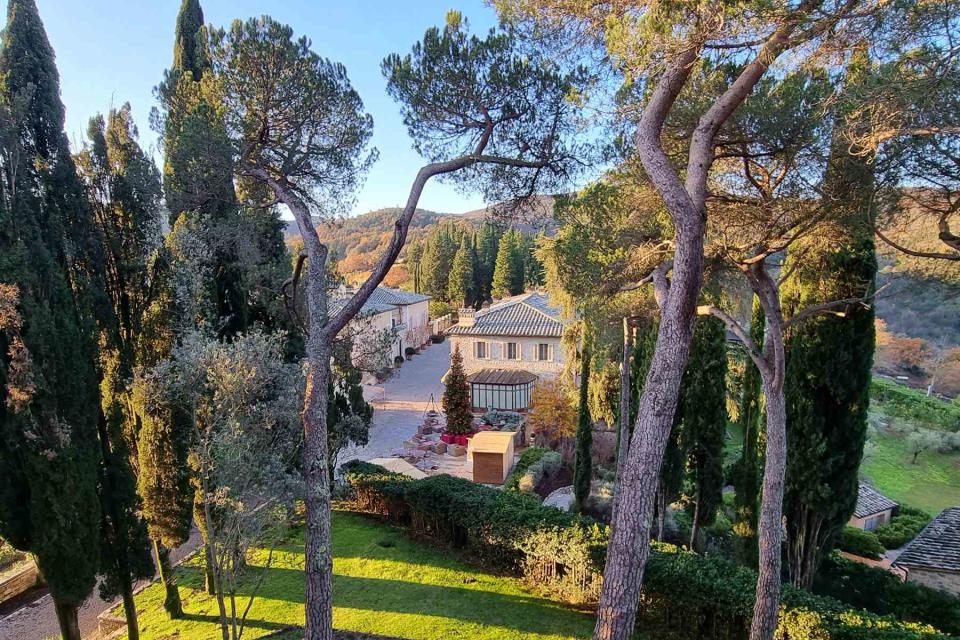
Elizabeth Heath
When you cross the threshold of the world’s best hotel, you carry with you the baggage of very high expectations. And I actually checked into Rosewood Castiglion del Bosco with two prejudices in my suitcase — not just the weight of the Travel + Leisure's 2022 World's Best Awards, which named this hotel the best in the world, but also of being a longtime neighbor of the hotel. I’ve lived in Umbria, near the Tuscan border, for 13 years and have been visiting and writing about accommodations across Italy for almost that long. Frankly, I’m a little Tuscany’d out. And my Umbrian-born partner is worse than me. He takes every praise of Tuscany as an affront to our smaller, earthier region to the south and compulsively leaps to defend his beloved Umbria.
Yet even my Tuscan-skeptic husband was gobsmacked by this property.
It started when we turned our car off the main paved thoroughfare and onto the groomed gravel road that leads to the 5,000-acre resort. The undulating greens of Italy’s only private golf course unfolded on either side of us before we started climbing through the namesake bosco — or woodlands — to reach the hotel reception. We could spy the stone borgo on the hilltop, punctuated by tall, skinny cypress trees — almost obligatory landmarks in Tuscany. Our car and suitcase were whisked away the moment we arrived and truthfully, our emotional baggage soon followed.
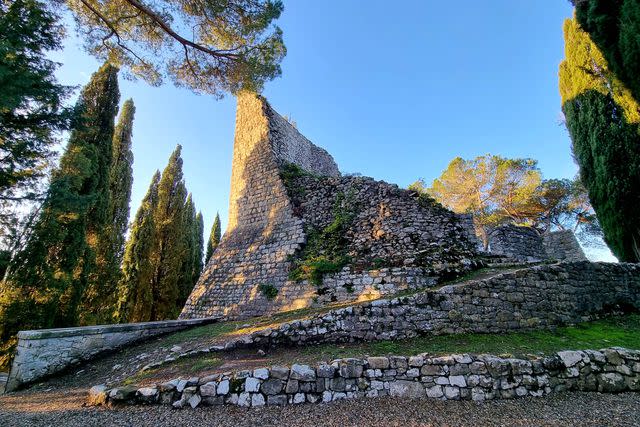
Elizabeth Heath
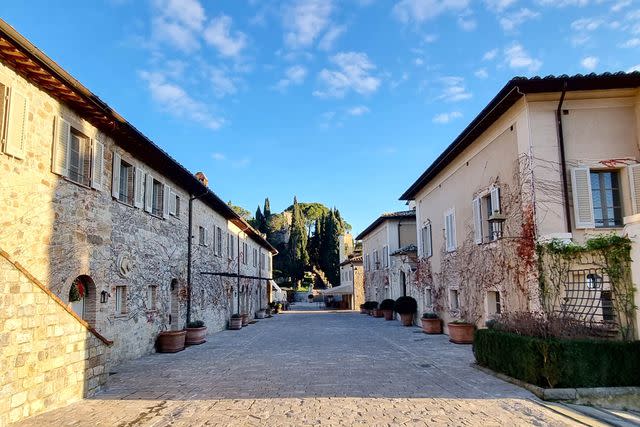
Elizabeth Heath
Originally opened to guests in 2010 by the Ferragamo family, Castiglion del Bosco has flown the Rosewood flag since 2015. The resort was an early entry into Italy’s now surging borgo hotel scheme, where abandoned medieval hamlets have found new life as upscale accommodations spread across multiple buildings and acres. The concept allows guests to have a complete encounter with rural Italy — albeit a curated version, from sleeping and dining in historic buildings to partaking in cultural enrichment and culinary experiences, all within the comfortable confines of the village.
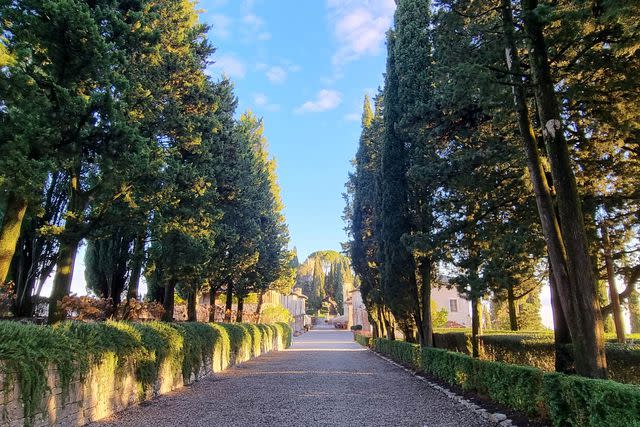
Elizabeth Heath
At Castiglion, the borgo is a cluster of restored farmhouses from the 17th and 18th centuries, which stand near the evocative ruins of a small castle — the castiglion — from the 1100s. A still-consecrated 14th-century church is nestled in the compound and contains frescos from the Lorenzetti brothers, both important figures in medieval Italian art. From the resort’s many vantage points, including restaurant patios, terraced gardens and a heated saltwater pool, the resplendent Val d’Orcia unfurls. Recognized as a UNESCO World Heritage Site for its preservation of the Renaissance rural landscape and “utopian aesthetic” of the bucolic, yet altered natural environment, the valley panorama is a medley of rolling agricultural fields, stands of woods, roads lined with those ubiquitous cypress trees, and pristinely kept walled cities, including nearby Montalcino and Pienza.
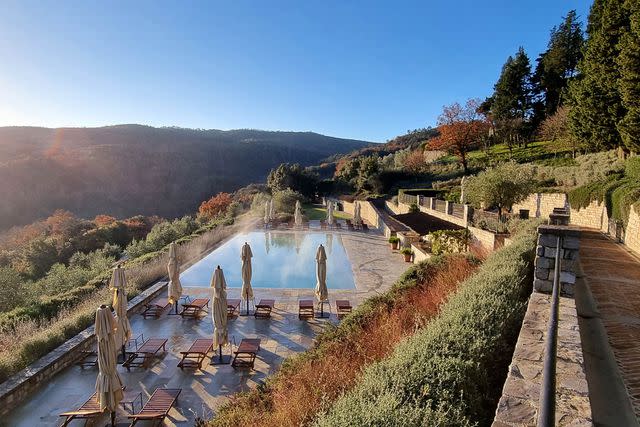
Elizabeth Heath
From this coveted position, Castiglion del Bosco delivers the full-on Tuscan dream, one that left my spouse and me, both of whom have covered a lot of ground in Tuscany, frequently uttering the word impeccabile.
We were assigned a borgo suite, one of the five categories of suites at Castiglion, a one-bedroom sprawler at 828 square feet. The living area, with its bar, fireplace, library, and a dining table set with welcome goodies, certainly issued the invitation to linger. A separate bedroom, a walk-through wardrobe and a ginormous marble bathroom — featuring a bathtub where our daughter could watch the activity of the borgo from the window while enjoying Ferragamo bath amenities — made up the rest of the suite. After my daughter and I indulged in some afternoon tea and snacks, offered every day in the borgo bar, I had a date to keep — for a red grape-infused massage at the spa.
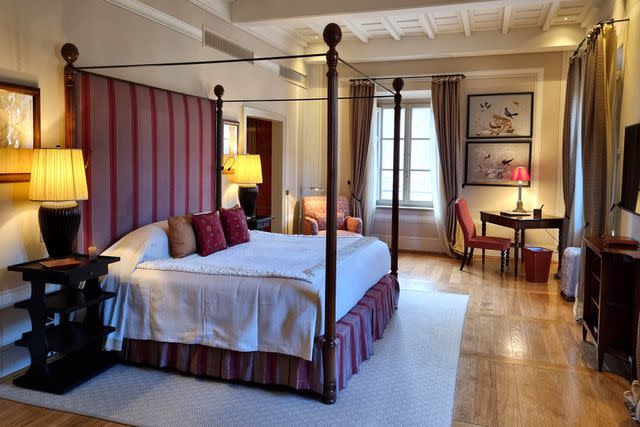
Elizabeth Heath
As my husband and daughter explored the grounds, I padded down a landscaped path to the resort’s small spa facility, which has three individual treatment rooms and two for couples. My head-to-toe massage used locally sourced grape seed oil and lavender aromatherapy and lasted a full 60 minutes, which felt especially indulgent when compared to typical 50-minute offerings. I followed the massage with a session in the private wellness lounge, where I had a dry sauna, a hammam, a relaxation area, and refreshments all to myself. This latter service is available to all resort guests at no additional cost, though the space does have to be reserved in advance.
After departing the spa, I found my family on the bocce court. We adjourned to the bar for pre-dinner cocktails (including a kids’ version, of course) and live music. Drinks rolled into dinner at Campo del Drago, one of two restaurants on-property (three, when the seasonal golf club dining room is open), which recently earned its first Michelin star. The kitchen is helmed by executive chef Matteo Temperini, who draws on the riches of his home province of Siena to offer dishes that are both comfortable and challenging. The beef stew-filled tortelli with panforte (a typical spiced cake of Siena) seasoning, topped with black truffle, is not your nonna’s tortellini, but she’d give it an approving nod. Likewise for the roast pigeon — unusual for U.S. palates but a mainstay of many an Italian country kitchen — served with root vegetables from the resort’s organic garden. Since we were there in white truffle season, my husband treated himself to a hallmark truffle dish that’s as simple as it is extraordinary — a generous shaving of the precious fungus served over two poached eggs. He’s still talking about it.
Every morning, Campo del Drago is the spot for an abundant breakfast buffet paired with a menu of made-to-order items like eggs Benedict and pancakes. From breakfast, we headed right to a wine tour and tasting — because when in Tuscany, right? The Castiglion del Bosco winery, also started by the Ferragamos, was a founding member of the Brunello di Montalcino wine consortium, the group that put Brunello, now one of Italy’s most expensive wines, on the oenological map. After a brief tour of the maceration area and barrel-filled cantinas, we stopped at the winery’s most impressive room — the rotunda-shaped sanctuary where members of the Millecento Wine Club keep their private collections in individually labeled lockers and come to “visit” their wine from time to time. In addition to several Ferragamos, we spied Justin and Jessica Timberlake’s names among the rows of lockers. A Brunello tasting followed, naturally.
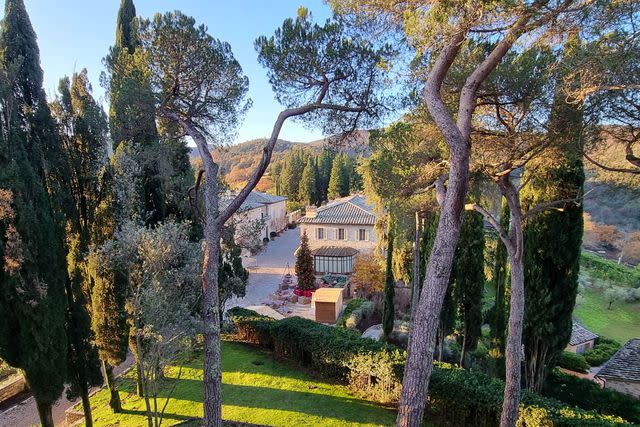
Elizabeth Heath
There’s not a hair out of place at Castiglion del Bosco. Yet it’s perfectly coiffed without ever feeling overly made-up — like one of those flawlessly attired and accessorized Italian women who just make it look easy. While it’s definitely not effortless — it’s clear there’s a huge team working in front of and behind the scenes to ensure that every gravel path is raked, every pillow fluffed, and every crumb combed away, this attention to detail, as well as a palpable sense of place, set Castiglion apart from its many competitors in the borgo hotel category.
As we drove home through the winter-bare, yet still beautiful fields of the Val d’Orcia, I urged my husband to consider how the resort and its surrounding countryside epitomize the Tuscan ideal for travelers and, more broadly, the Italian ideal. Predictably, he rattled off a list of Umbria’s qualities in response. “But that,” he allowed, “was perfect.”
For more Travel & Leisure news, make sure to sign up for our newsletter!
Read the original article on Travel & Leisure.

